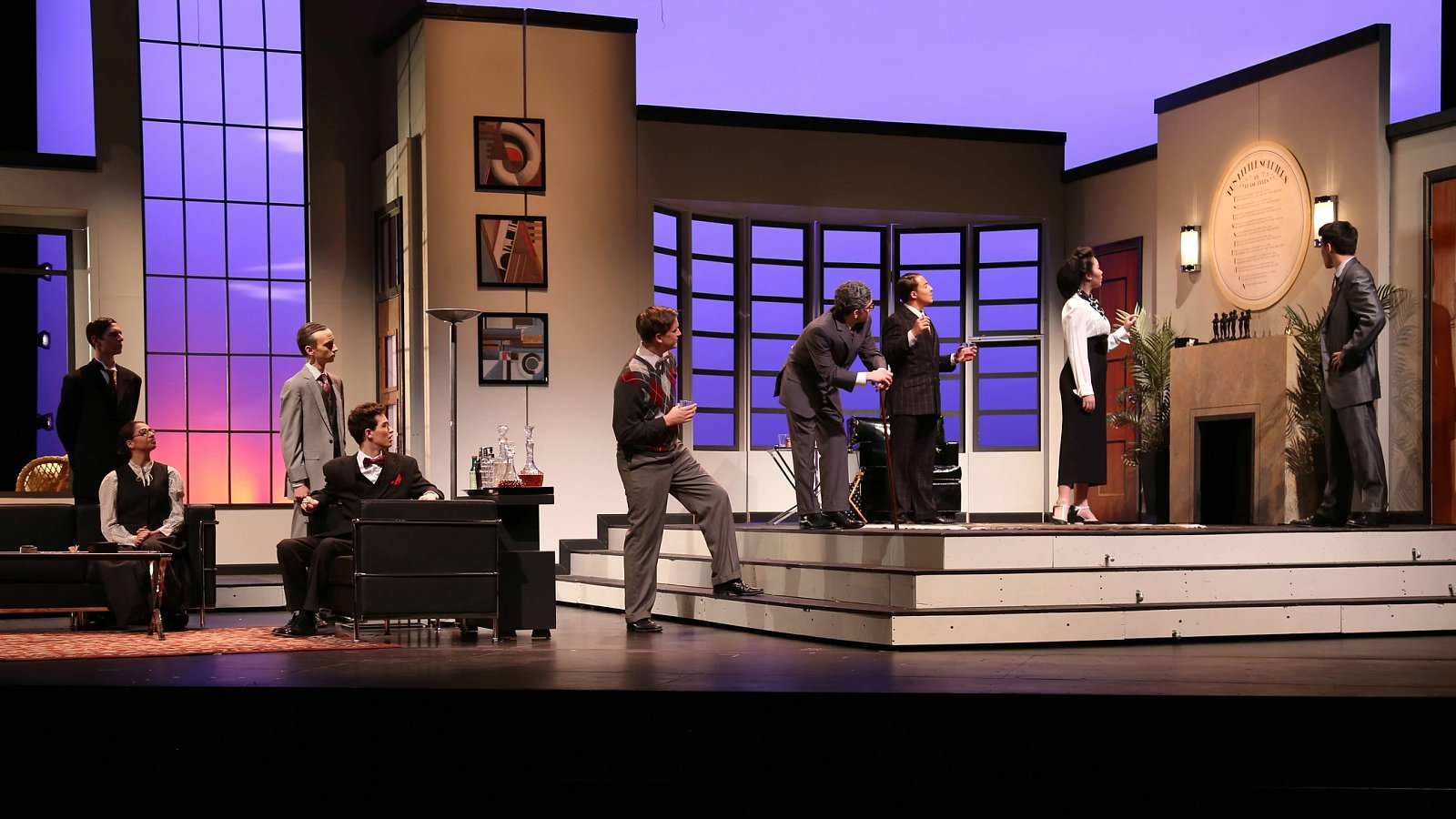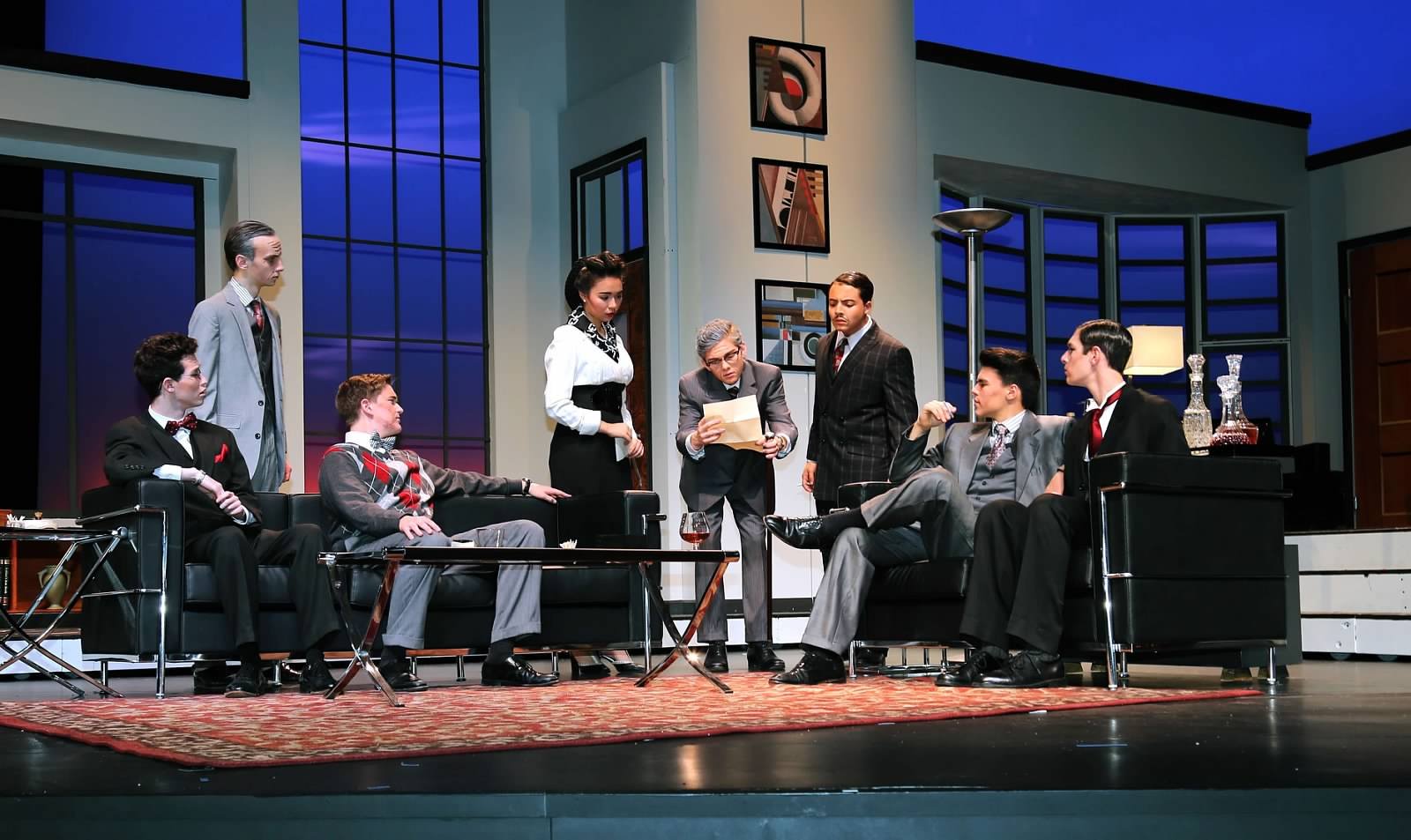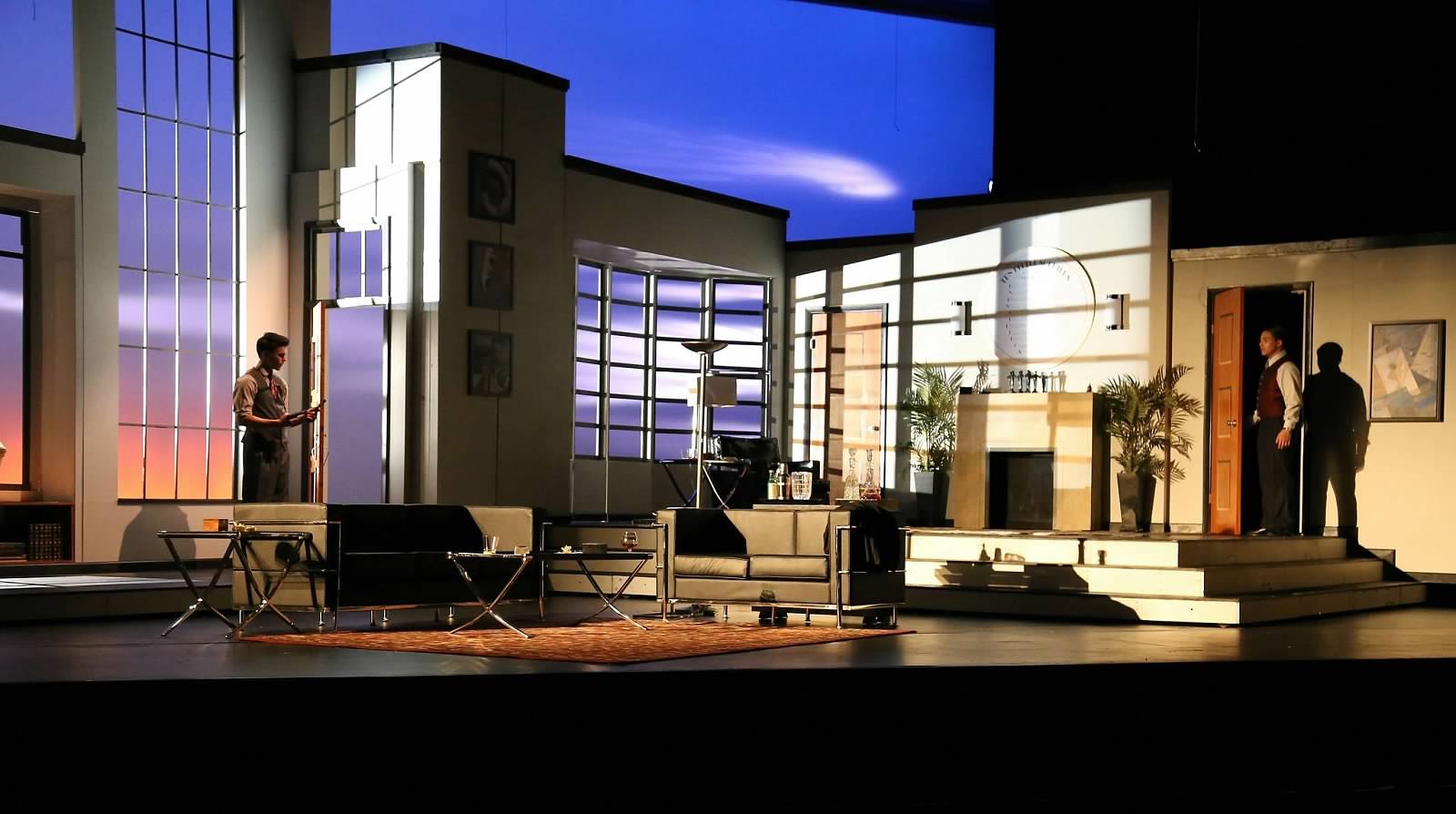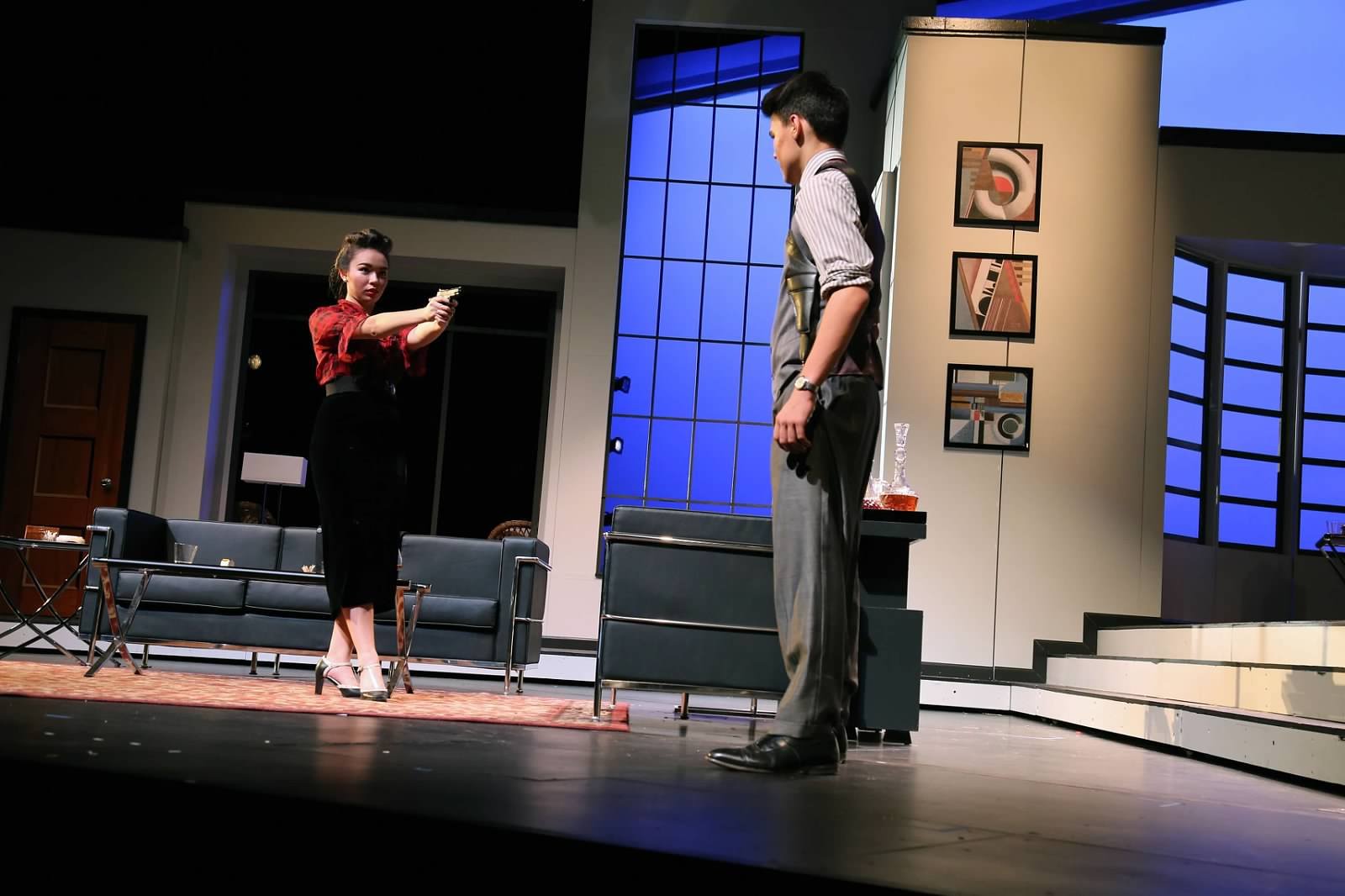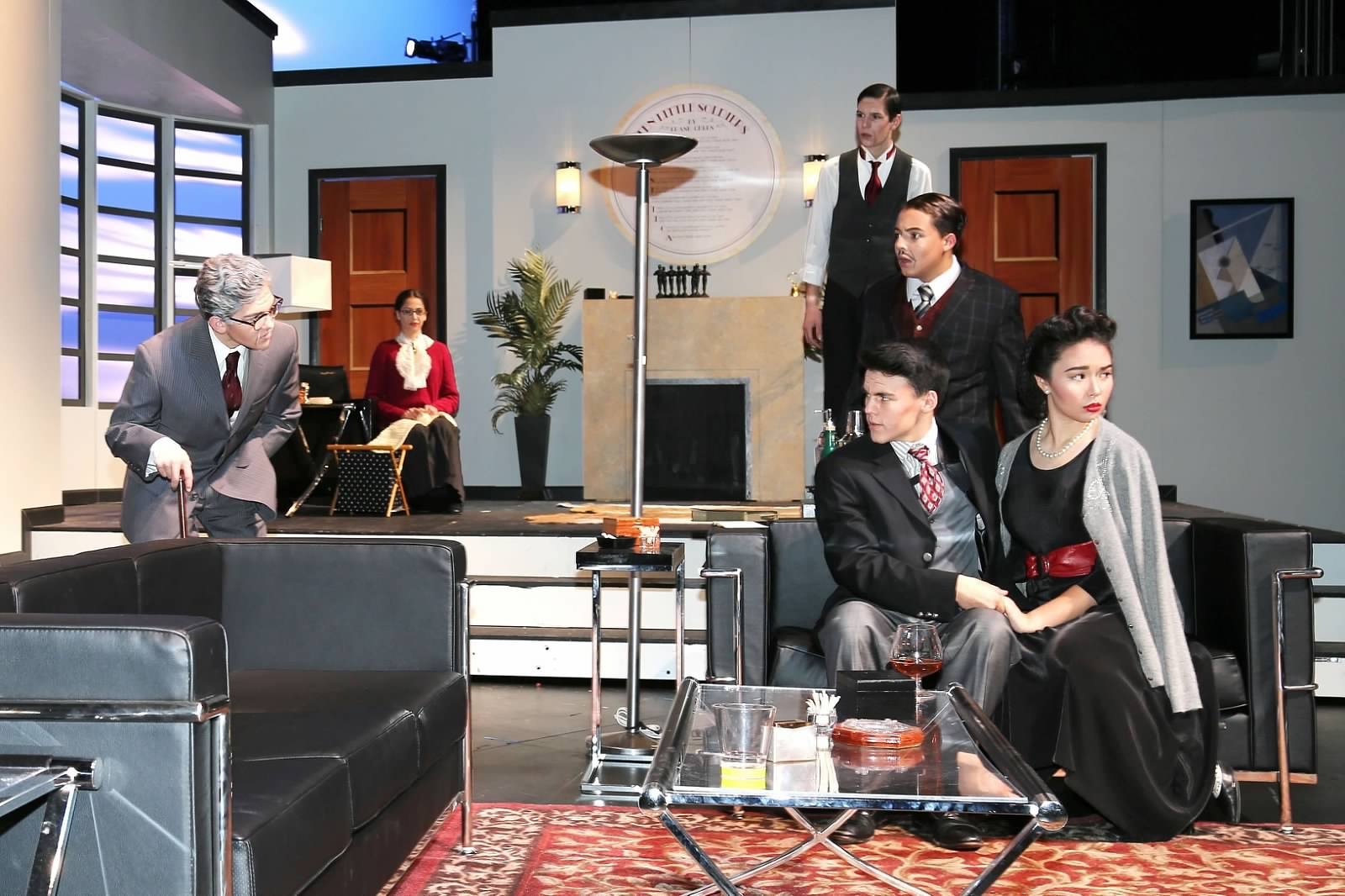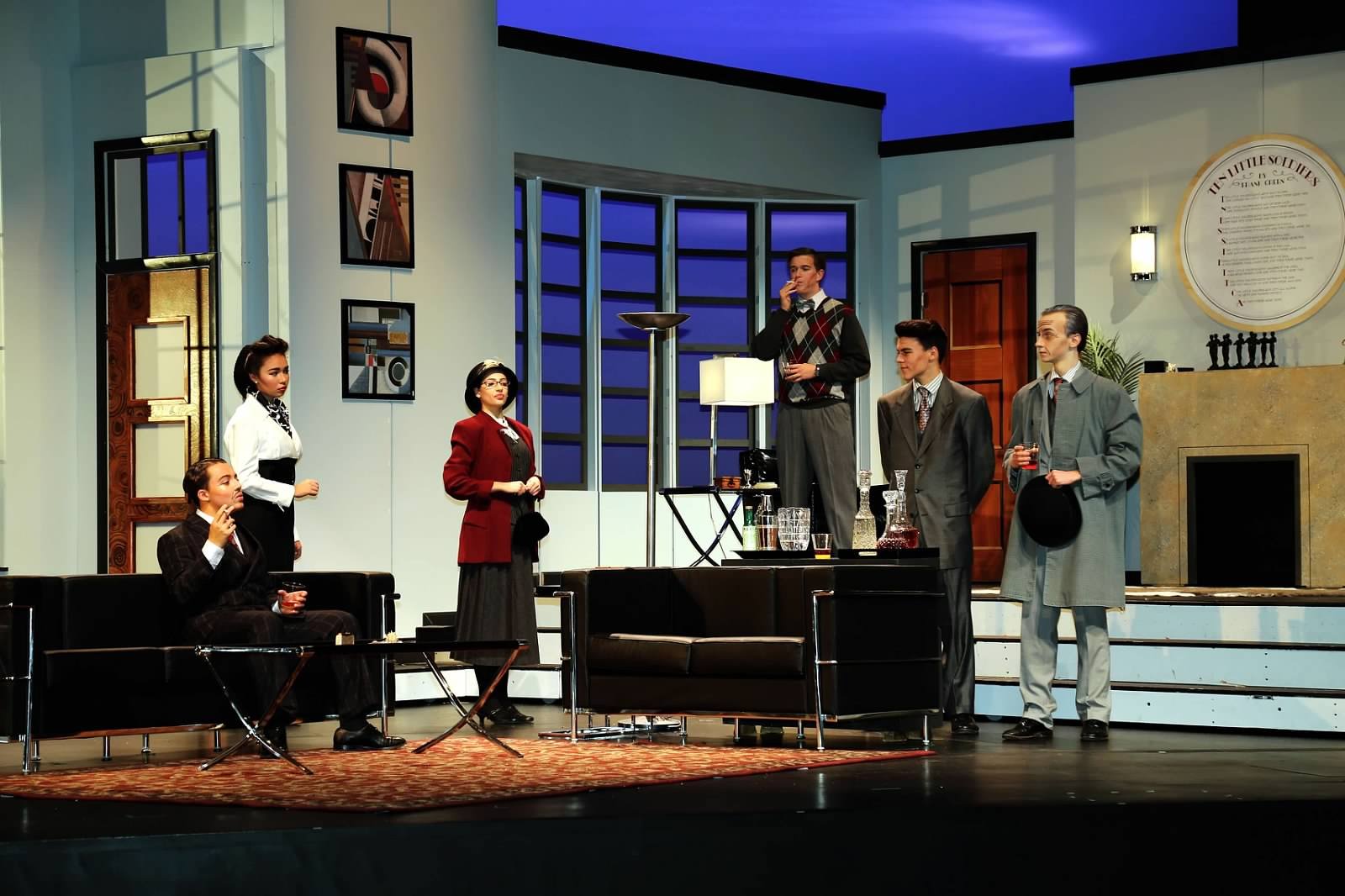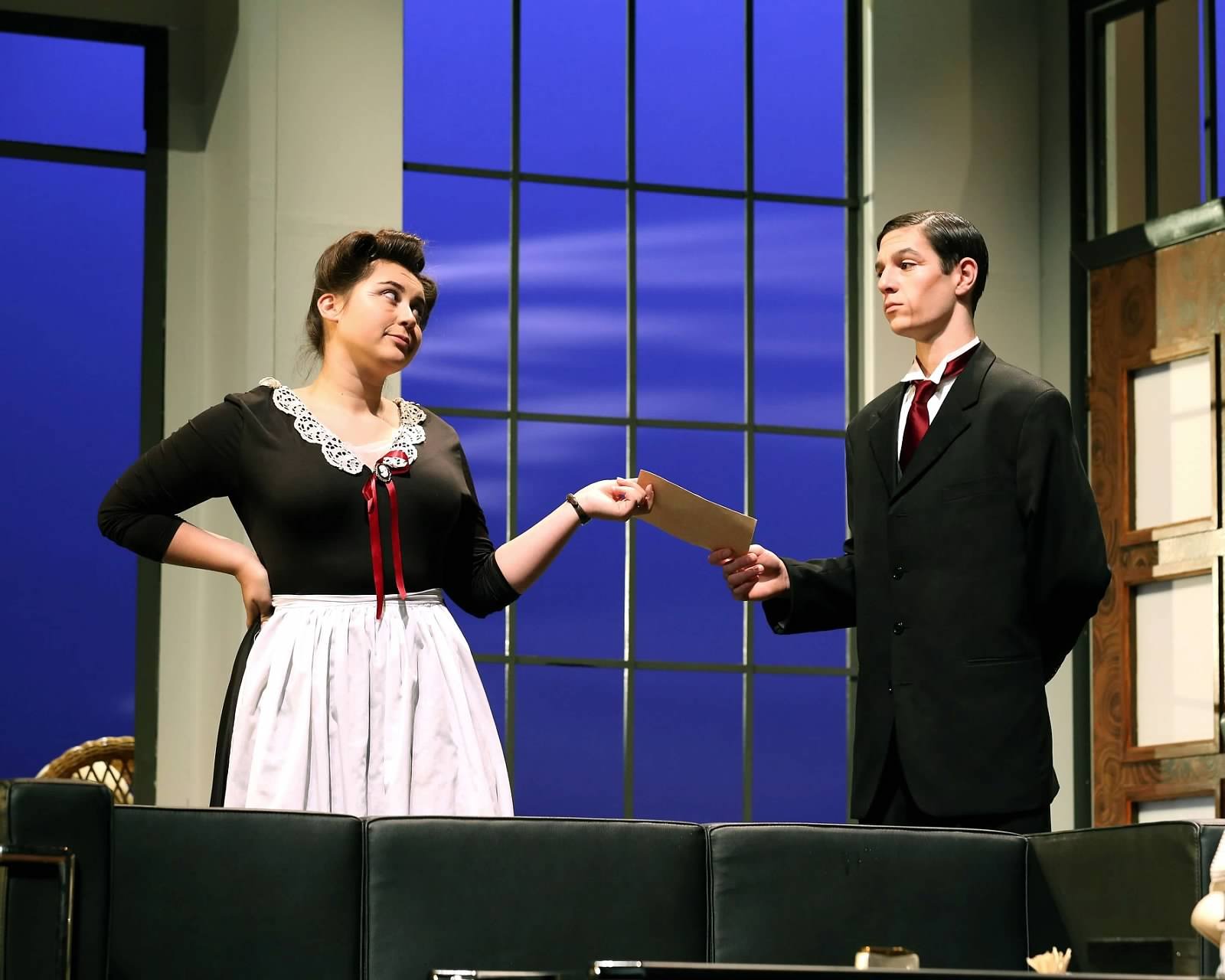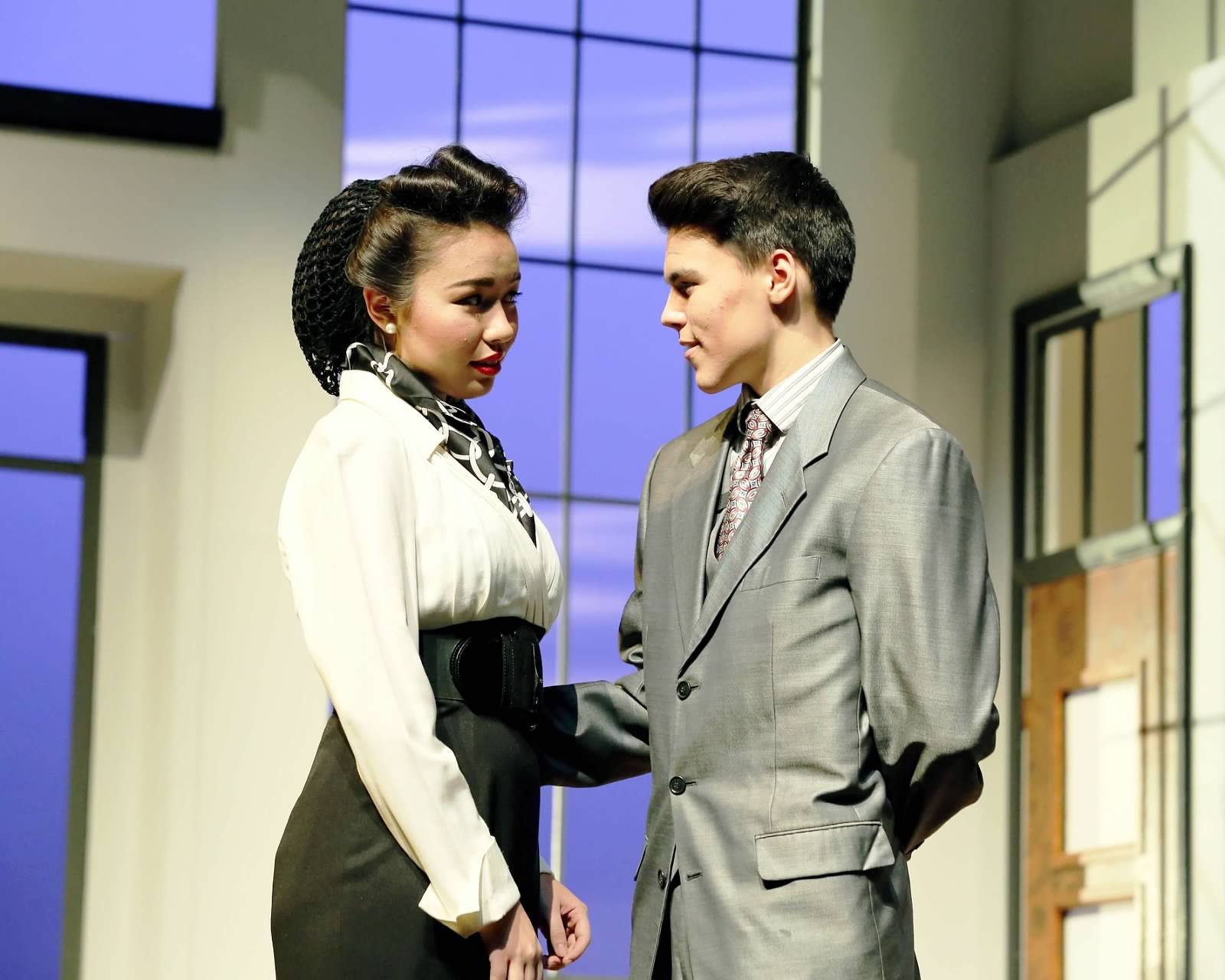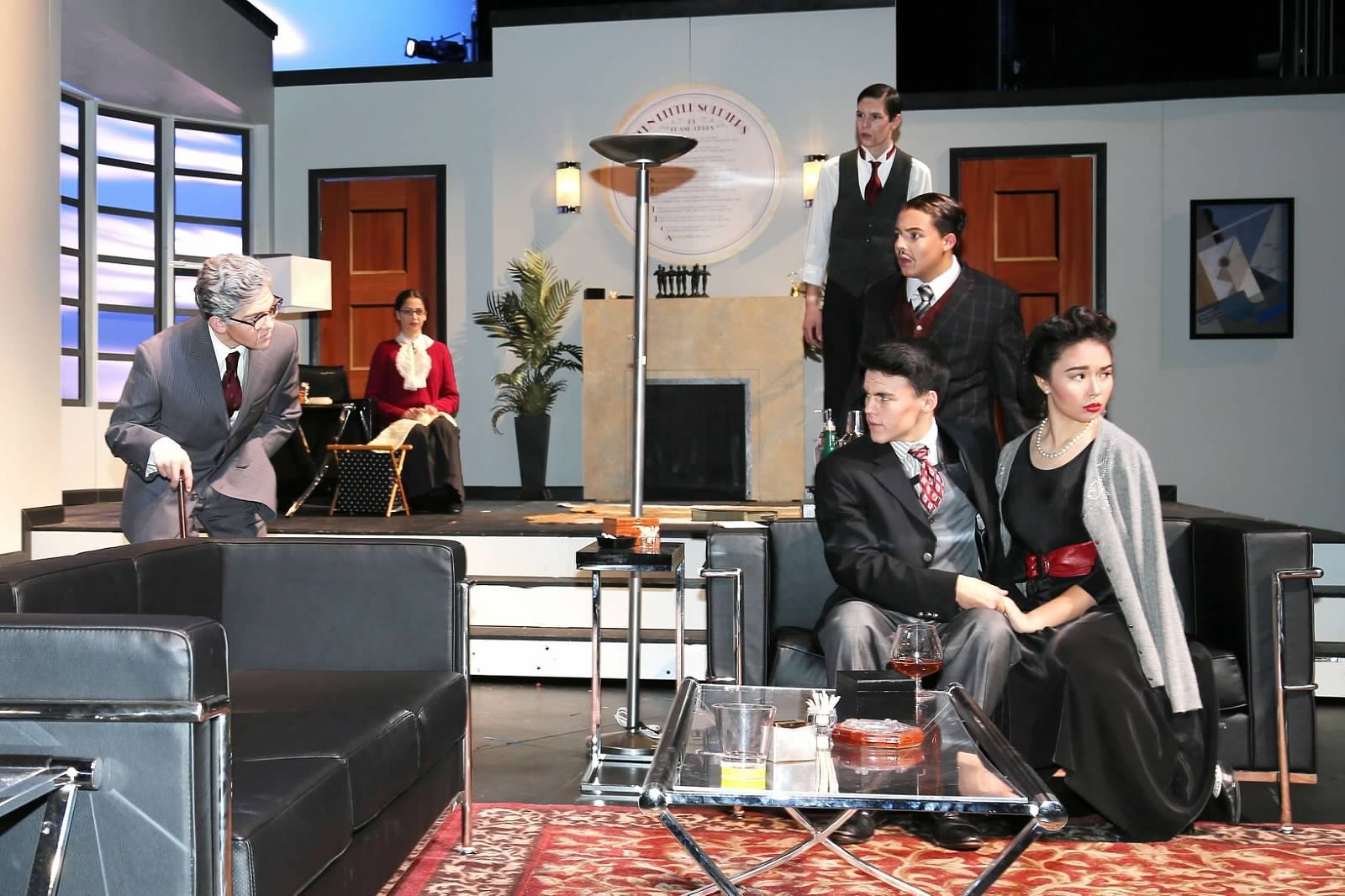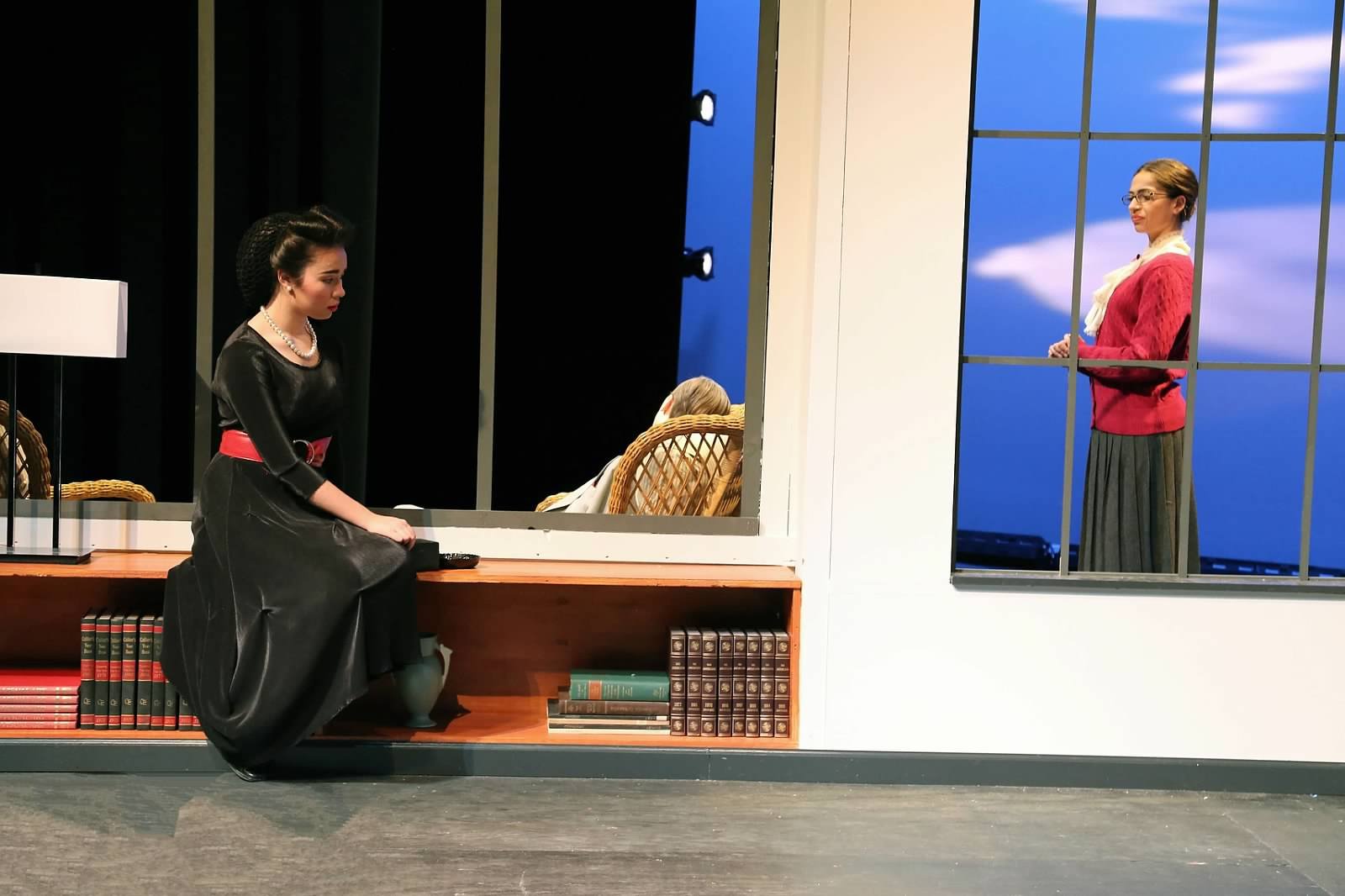
And Then There Were None
Good Counsel Theatre Company, 2017.
I introduced our design team to the strong visuals and limited color palette of films such as The Maltese Falcon and Suspicion as inspiration for the aesthetic of this show. While we drew much of the style from these black and white films, the designers felt very strongly about the integration of color as a means of expressing key storytelling elements. Therefore we settled on a modern style of architecture for the set and decor which leaned heavily into black, white, and metal accent pieces, while costumes and lighting created contrast through their use of color.
Entering into the 2017-2018 season at Good Counsel Theatre Company (GCTC), I had a stable full of excellent design students and very dedicated actors. As the Artistic Director of our theatre company, I wanted to showcase their talents and move our school program (which had just completed a new performing arts center and added technical theatre courses to our curriculum offerings) toward a more student-led, student-produced, student-run organizational structure. For this production I conceived a film noir aesthetic that would provide a strong visual language for the design team and evoke a certain style of performance for the actors.
Exploring Film Noir in Design & Performance
The costume designer, a junior at the school, developed a palette around black, white, and grey tones with red/burgundy accents the communicated the revelation of a character’s previous sins. The lighting designer, also a junior, made incredible use of the cyclorama as a way to visualize the storm as pathetic fallacy and reflect the action of the play. He was also able to create dramatic film noir looks that raised the tension at critical moments in the play.
In addition to the design, the performers explored the melodramatic acting style indicative of 1940s and 50s film noir. We utilized Lecoq’s tension states and Linklater vocal work extensively to build character and deepen their connection to the text. This work grounded their performances strongly in realistic motivation and balanced the stylization of the interpretation so specific to the aesthetics of the 40s and 50s. Additionally, integrating music into the rehearsal process led to an integration of Viewpoints work that eventually sculpted moments of transition and important plot reveals. This proved vital to the production as this piece was performed without an intermission and required key costume changes at the end of each act. Overall the student’s commitment to this interpretation of And Then There Were None beautifully brought all of the elements together to create a very compelling performance of this classic mystery.
